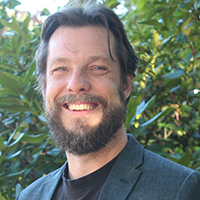
The world looks very different today than it did a few months ago, when the British Columbia government was in the midst of a review to modernize land use planning and resource management in the province. Since then, COVID-19 has ravaged public health and economies around the world.
How relevant are BC’s land use planning efforts in this new reality? Research from our team at the University of Victoria’s POLIS Water Sustainability Project indicates that integrated land and water planning matter now more than ever in our changed world.
In BC, the COVID-19 crisis arrived at a time of mounting public and professional alarm about risks to our water and to public health and security. The increasing concern was punctuated by a scathing report from the BC Auditor General in 2019, which came on the heels of a number of other independent reviews on source water protection and watershed concerns.
How land and water are used, governed and protected is often at the nexus of the many dire and persistent challenges communities are increasingly facing. Water and healthy, functioning watersheds are the basis for satisfying our most fundamental needs, including drinking water, sanitation, food production, climate resilience and economic activity — including tourism, resource extraction, and small business.
Across the nation, communities are beginning an unprecedented program of economic recovery that must support a transition to a more secure future. In this transition, water security will not be an optional consideration or simply “nice to have.” Rather, spending stimulus funding in watersheds — alongside a focus on updating and modernizing how we manage, plan and govern our watersheds — will be a crucial investment in long-term health and prosperity.
To support the BC government’s interlinked commitments to modernize land use planning, reconciliation, rural economic recovery and climate change response, the POLIS team developed a comprehensive research program that reviews the past, present and future of land and water planning in BC. In addition to providing direct value to the provincial government, this research offers insights and a potential path for other regions across Canada and around the world looking to plan for a more resilient future.
Learning from past and emerging planning processes
In the 1990s formalized land use planning programs in BC were innovative by Canadian standards, with a focus on land-based resource development, multi-stakeholder processes and protected-area designations. However, these earlier planning regimes were limited in many ways. For instance, plans were generally highly focused on single sectors (such as forestry), with little or no integration with water resources or meaningful attention to governance.
More recently, land use and water planning in BC has advanced in fits and starts, generally as a diminishing political priority and mainly deployed as a specific tool in response to conflict and litigation by Indigenous nations. In an effort to address emerging concerns and fill planning gaps across the BC landscape, a diverse set of local bodies and authorities are leading and engaging directly in land and water planning processes. This more “organic” and bottom-up planning approach has resulted in a patchwork of different types of plans for land and water with varying scale, scope, implications and enforceability.
British Columbia is now in a period of innovation with a renewed commitment to planning, a range of new government-to-government agreements, Indigenous relationships more firmly at the centre in a partnership approach and several new collaborative land use and water planning approaches under way.
Recent and ongoing planning approaches and projects in BC — from the Gitanyow Lax’yip Land Use Plan to the Klappan Plan to the Nicola watershed pilot memorandum of understanding to emerging efforts in the Koksilah watershed — are already demonstrating what is possible in a modernized, integrated, co-governed and adaptive regime.
A modernized planning framework
To support a shift from transactional and crisis-driven planning to an integrated and comprehensive modernized approach, our research sets out an overall planning framework for British Columbia. This framework consists of six design elements that can be adapted and tailored for individual local or regional land use plans to support meaningful steps forward.
- Attention to governance, the United Nations Declaration on the Rights of Indigenous Peoples (UNDRIP) and capacity building. Emphasis on governance from the outset and throughout the planning process will help identify key decision points; clarify roles, responsibility and accountability; and enable better dispute resolution. Realizing UNDRIP commitments in the context of land and water planning will include processes for free, prior and informed consent; co-governance; recognition, respect and adherence to Indigenous title, rights, laws and decision-making; and sustained resourcing.
- Planning in a phased and adaptive process. Five key phases are critical to effective planning: visioning; risk assessment; planning and engagement; management and decisions; and evaluation and adaptation. These phases work together to ensure that plans have the necessary support, legitimacy and confidence of Indigenous and Crown government partners, industry and community; and that the plans are linked to decision-making for full impact.
- Considering water in all plans and making water protection the planning priority in high-risk watersheds. Water is a critical strategic consideration in any integrated resource management and ecosystem-based approach. Water and watershed function must be considered and included in all modernized land use plans — and elevated as a potential priority and focus in planning where watershed risks are significant.
- Determining plan scale and scope according to the risk and complexity of issues. Planning must be explicitly flexible and nimble in both scale and sophistication (thus embedding a “form follows function” approach).
- Deploying Crown legal and policy tools while recognizing Indigenous laws and structures of authority in the broader regime. The ability to translate plans into law is essential to public confidence and to create incentives and consequences that drive changes to how activities are conducted on the land and in the water. Any land (and water) use plan will ultimately need to be responsive and complementary to both Crown and Indigenous authorities and laws. This is a work in progress and evolving constantly because we in BC (and in Canada and globally) are not yet at the place where the interaction of the two legal systems is well understood or operating smoothly, let alone reconciled.
- Adequate resourcing. Modernized land use and water planning processes will need resources — money and people — to succeed.
A way forward
Our comprehensive review and investigation of land and water planning points to three main conclusions focused on BC but appropriate to any region facing the many challenges outlined here.
First, reconciliation and land use planning cannot be successful without explicit and sustained attention to water.
Second, economic recovery and a resilient local economy require certainty and clarity around resource development and investment potential — including what can and cannot be done on the land and in the water — which can be advanced through better planning and a credible process.
Third, to realize success, the provincial government and its planning partners need capacity and sustained support for a new planning regime. In addition, government must prioritize implementation of innovative water planning policy tools.
The pandemic and the ensuing economic chaos are tragic. However, these immediate threats do not mitigate the amplifying effects of climate change and degraded watersheds. While BC must follow through with its commitment to modernize land use planning and the work initiated before the pandemic, this unprecedented time is also offering powerful lessons about what we might want a post-COVID world to look like, as we start down the long road of building back better.
Photo: The view from Teapot Mountain in Prince George, BC.











